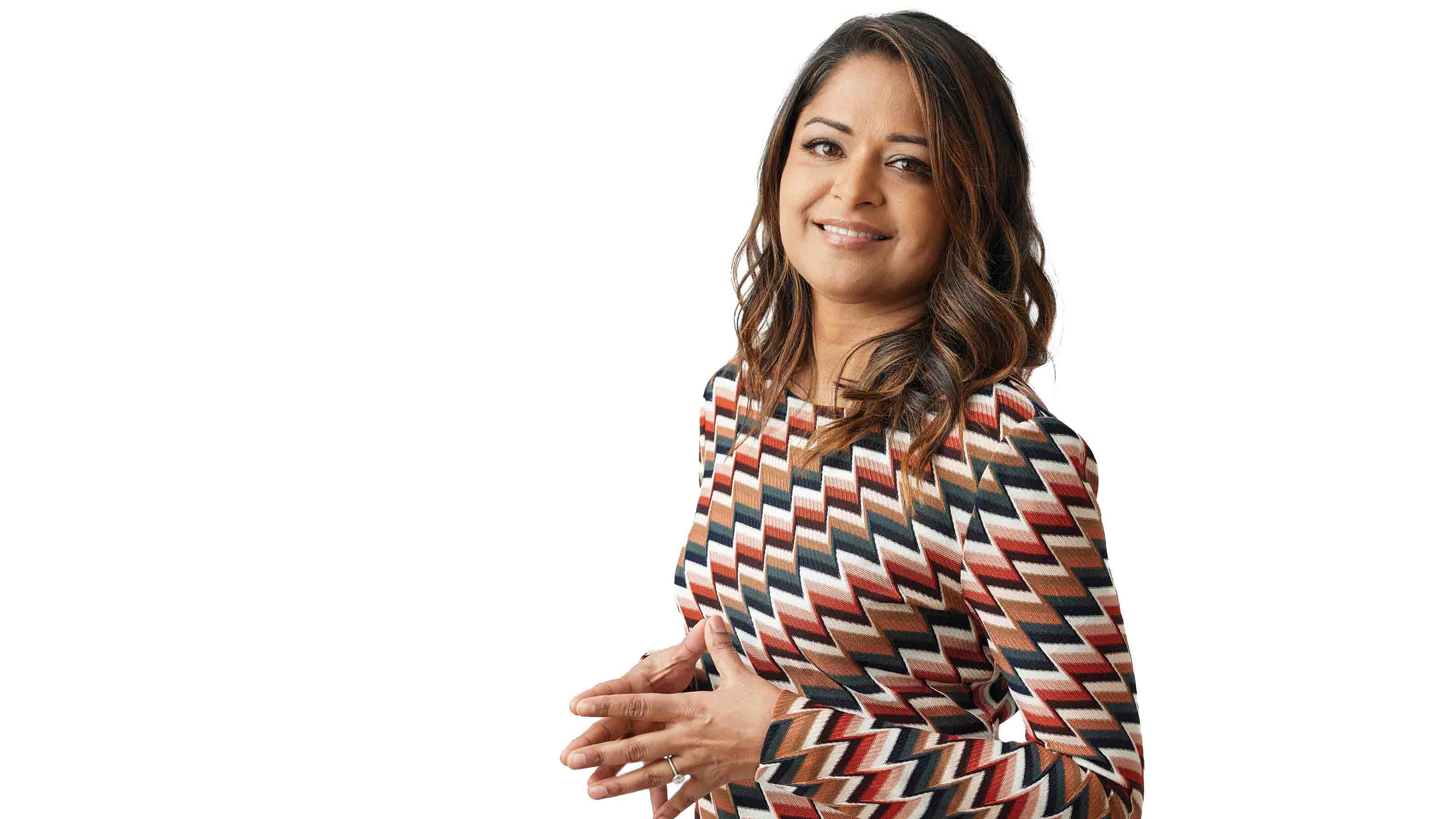BofA's Savita Subramanian: Stocks Are in for a Volatile Year
A lot has happened already in 2022, says the head of equity and quantitative strategy at BofA Securities. But the market's roller-coaster ride is far from over.


Savita Subramanian is head of equity and quantitative strategy at BofA Securities. Read on as we ask Subramanian about finding opportunities in this volatile market, as well as her stance on tech stocks and dividend payers.
Back when everyone was bullish and the market was setting new highs, you had an underwhelming outlook for stocks. How do you think this year will shake out? It's going to be a volatile year – oh boy, is it! A lot has happened already.
Our year-end target for the S&P 500 is 4,600. When we published this in November, we appeared bearish, but that's essentially bullish from where we are today [4,329 on March 4]. But our target could be reached multiple times this year; a straight line to 4,600 is not our call. We'll see big declines and big increases over the year.

Sign up for Kiplinger’s Free E-Newsletters
Profit and prosper with the best of expert advice on investing, taxes, retirement, personal finance and more - straight to your e-mail.
Profit and prosper with the best of expert advice - straight to your e-mail.
Based on our economic forecast for interest rates and inflation, fair value for the market is lower than where we are today.
Investors have been focused on geopolitics most recently, but what else do you see driving the market? The market is absorbing the idea that the Federal Reserve is reversing course in terms of providing stimulus from lower interest rates, as well as from its bond-buying program.
We've also reached peak globalization. Over the past 20 years, there's been a tremendous expansion of profit margins from lower labor costs, lower raw materials costs and lower taxes realized by moving outside the U.S. Now we're moving from free trade and open borders to more on-shoring, with companies becoming a little more domestically focused, driven partly by geopolitical friction, partly by the supply-chain risks we saw during the pandemic.
Also, with the environmental focus that companies have taken on, it behooves them to on-shore rather than import raw materials and export goods overseas to be processed – that's a lot of carbon emissions. They're also redefining trading partners based on shared values, looking for the same types of corporate governance, transparency and regulatory practices instead of just finding the cheapest areas to produce widgets.
How do investors position their portfolios for those themes? There is a risk to profit margins in the near term, because at least half of all that expansion over the past 20 years was driven by globalization. That's one reason we're less bullish on stocks in the S&P 500 versus more domestically focused small-cap stocks.
But this is going to be a year when picking your spots is important. You want to be looking for companies that can benefit from reopening and continued strength in the U.S. economy.
On the negative side, we've already seen a significant downturn in the high-growth stocks that are low-interest-rate beneficiaries – companies not necessarily generating a lot of cash flows today but that promise great growth in the future.
Where are the opportunities in this volatile market? When you sift through the rubble of the market today, the key factor to focus on is the generation and preservation of free cash flow [cash profits left after investing to maintain or expand the business].
Think of supply and demand. Free cash flow is growing more scarce and becoming more valuable: Rates are a bit higher, so companies are paying more to borrow; they're shouldering the higher costs of inflation; and if our call is correct and the Fed hikes short-term interest rates seven times this year, cash will move from being worthless to providing close to a 2% return. That sounds low, but in a world where we don't expect great shakes from stocks, 2% is noteworthy.
What pockets of the market do you like now? Healthcare is an area of the market that can continue to maintain pricing power, where you've seen preservation of profit margins. And the importance of healthcare was underscored by the global pandemic.
I like small caps because they're super cheap, still trading at a 26% discount to large caps – historically, they've traded at an average 2% premium. They're also surprisingly great in economic upturns and in inflationary periods, and even during periods of protectionism, which fits our global-to-local theme. The risk is that if Fed tightening or geopolitical conflict catapults us into recession, then small caps won't do well.
In terms of market sentiment, which is a contrarian indicator, a lot of the world is still underweight in energy and financial stocks. That makes those areas more interesting.
What's your take on tech stocks? We've had what has felt like a harrowing sell-off. Is it time to buy tech wholesale? No. Typically, sectors don't bottom until everyone forgets about them. But there are a lot of companies that have fallen in price so significantly that this could be a good entry point.
You really want to look for free cash flow rather than other factors that seem more exciting, like high growth or surprising earnings. I'm really focused on a pretty boring mantra: Free cash flow is king.
Longer term, what's your view of stocks? We're past the point of heady returns. Our valuation model, which is not that predictive over the near term but is a very powerful signal for thinking about how much money you're going to make over the next 10 years, suggests that annualized returns for the S&P 500 are going to be significantly lower over the next 10 years than what this model was telling us in 2010 and 2011, when valuations were much more attractive. We expect returns in the low-single-digit percentages.
What role will dividends play? A pretty significant chunk of total returns has come from dividends historically – 40%, if you look back at the inception of data on the S&P 500. Today, if we're looking for paltry or negative price returns, those dividends are going to contribute a bigger proportion of returns to your portfolio.
Look for companies with safe, stable and growing dividends – ones that can grow dividends along with inflation, rather than being impaired by the inflation cycle.
Where do you find good dividend payers? S&P 500 companies across the board are more likely to raise dividends. Last year, earnings growth for S&P companies was 49%, dividend growth only about 20%. There is some catch up in dividend growth that has already occurred this year and will likely continue.
We're finding that a lot of classic dividend-yield sectors – consumer staples, for instance – may not be the best places to get yield today. We prefer energy companies. They're still relatively inexpensive, they're working to lower their emissions risk, and they’ve gotten disciplined about managing capital. We like financials – they've been forced to shore up balance sheets, there is ample room to raise dividends, and they're more focused on their commitment to shareholders via dividends rather than share buybacks.
What do you say to novice investors about persevering for the long haul? I have this conversation with my kids all the time. Here's my advice. It's great that investing has become broad-based and not just for the elite. I'm super happy about that. But there's a difference between trading and investing.
Look at the numbers: If you bought and sold the S&P 500 on a daily basis, you'd have a coin-flip chance of making money. But if you buy and hold over a 10-year horizon, your chance of losing money is closer to just 5%.
Simply expanding your time horizon is a recipe for returns. When it comes to investing in stocks, you want to take a long view.
Get Kiplinger Today newsletter — free
Profit and prosper with the best of Kiplinger's advice on investing, taxes, retirement, personal finance and much more. Delivered daily. Enter your email in the box and click Sign Me Up.

Anne Kates Smith brings Wall Street to Main Street, with decades of experience covering investments and personal finance for real people trying to navigate fast-changing markets, preserve financial security or plan for the future. She oversees the magazine's investing coverage, authors Kiplinger’s biannual stock-market outlooks and writes the "Your Mind and Your Money" column, a take on behavioral finance and how investors can get out of their own way. Smith began her journalism career as a writer and columnist for USA Today. Prior to joining Kiplinger, she was a senior editor at U.S. News & World Report and a contributing columnist for TheStreet. Smith is a graduate of St. John's College in Annapolis, Md., the third-oldest college in America.
-
 The Best Places for LGBTQ People to Retire Abroad
The Best Places for LGBTQ People to Retire AbroadLGBTQ people can safely retire abroad, but they must know a country’s laws and level of support — going beyond the usual retirement considerations.
By Drew Limsky Published
-
 Financial Planning's Paradox: Balancing Riches and True Wealth
Financial Planning's Paradox: Balancing Riches and True WealthWhile enough money is important for financial security, it does not guarantee fulfillment. How can retirees and financial advisers keep their eye on the ball?
By Richard P. Himmer, PhD Published
-
 Stock Market Today: Stocks Surge to Close a Volatile Week
Stock Market Today: Stocks Surge to Close a Volatile WeekIt was another day with a week's worth of both news and price action, but it ended on a strongly positive note.
By David Dittman Published
-
 Stock Market Today: Uncertainty Proliferates: Dow Loses 1,014 Points
Stock Market Today: Uncertainty Proliferates: Dow Loses 1,014 PointsWeaker-than-expected consumer inflation data wasn't enough to stabilize sentiment during another volatile day for financial markets.
By David Dittman Published
-
 Stock Market Today: Tariff Pause Triggers 3,000-Point Dow Rally
Stock Market Today: Tariff Pause Triggers 3,000-Point Dow RallyThe bond market is sending concerning signals as the Trump administration executes its rapid reordering of global trade relationships.
By David Dittman Published
-
 Stock Market Today: Tariff Talks Drive Another Up-and-Down Day
Stock Market Today: Tariff Talks Drive Another Up-and-Down DayTrade war negotiations are happening, but the "fear gauge" is gyrating, and investors, traders and speculators are still searching for signs of a bottom.
By David Dittman Published
-
 Stock Market Today: Trump Pushes Dow Into 2,600-Point Swing
Stock Market Today: Trump Pushes Dow Into 2,600-Point SwingTariffs and trade war weigh on prices across global financial markets, with little light at the end of the tunnel.
By David Dittman Published
-
 Stock Market Today: Dow Drops Another 2,231 Points to Hit a Correction
Stock Market Today: Dow Drops Another 2,231 Points to Hit a CorrectionThe Nasdaq Composite, meanwhile, entered a new bear market with its latest slide.
By Karee Venema Published
-
 Stock Market Today: Dow Dives 1,679 Points on Trump Tariff Shock
Stock Market Today: Dow Dives 1,679 Points on Trump Tariff ShockU.S. stocks lost roughly $3.1 trillion in market cap on Thursday – the biggest one-day decline since the start of the COVID-19 pandemic in March 2020.
By Karee Venema Published
-
 Stock Market Today: It's the Old Up-Down Again on Liberation Day
Stock Market Today: It's the Old Up-Down Again on Liberation DayMarkets look forward to what comes with the reordering of 80-year-old global trade relationships.
By David Dittman Published